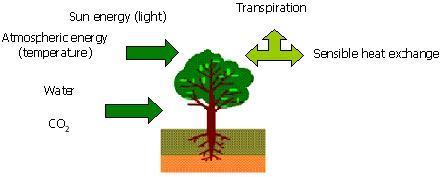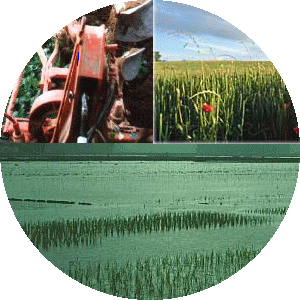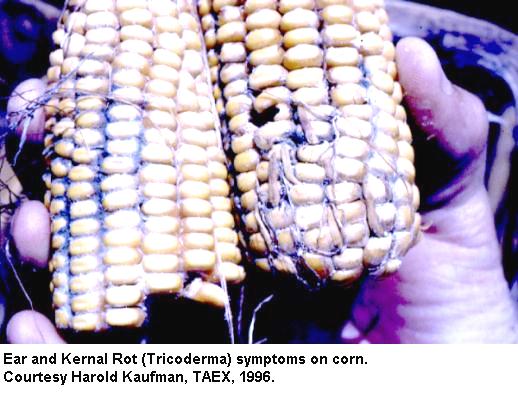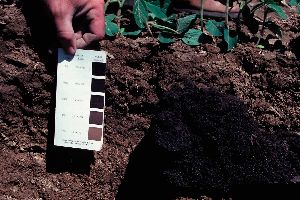 > ENC Master > Climate Encyclopaedia > Food & Climate > more > 1. Past and present > - crops
> ENC Master > Climate Encyclopaedia > Food & Climate > more > 1. Past and present > - crops
 |
|
|
|
|
CropsExtreme meteorological events, whether related to the El Niño phenomenon, other large-scale forcing factors, or simply the chaotic nature of the climate system, can have strongly detrimental effects on crop yields. The effects of extreme weather events on crops may be either direct or indirect, or both.
|
|
Higher temperatures increase the demand of water on crops directly by increasing the evaporation rate of the soil and the transpiration rate of the plants (process known by the name of evapotranspiration) as well as the atmospheric holding capacity for water vapour.
|
 |
|
1. Energy exchange between vegetation and atmosphere.
|
|
An indirect effect is created when higher temperatures hasten the breakdown of organic matter in soils, which in turn leads to lower soil organic matter levels, culminating in less soil-moisture retention and additional crop moisture stress (less available water). Both direct and indirect effects threaten yield. Plants in the early stages of plant development are especially vulnerable to extreme weather events
|
High Temperature |
|
When the optimal range of temperature values for a crop in a particular region is exceeded, crops tend to respond negatively, resulting in a drop in yield. The optimal temperature varies for different crops. Most agronomic crops are sensitive to episodes of high temperature. Air temperatures between 45 and 55oC that occur for at least 30 minutes directly damage crop leaves in most environments; even lower temperatures (35 to 40oC) can be damaging if they persist longer. Temperature greater than 36oC causes corn pollen to lose viability, while temperature about 20oC depresses tuber initiation and bulking in potato. Vulnerability of crops to damage by high temperatures varies with developmental stage. High temperatures during reproductive development are particularly injurious - for example, to corn at tasseling, to soybean at flowering, and to wheat at grain filling. Soybean is one crop that seems to have an ability to recover from heat stress, perhaps because of it is indeterminate (i.e., grows continuously).
|
|
Drought conditions may also be brought on by lower amounts of precipitation falling as snow and earlier snowmelt. In arid regions, these effects may reduce subsequent river discharge and irrigation water supplies during the growing season. Episodes of high relative humidity, frost, and hail can also affect yield and quality of fruits and vegetables (especially corn and other grains). Crop yields are most likely to suffer if dry periods occur during critical developmental stages such as reproduction. In most grain crops, flowering, pollination, and grain-filling are especially sensitive to water stress. For example, the effects of drought can be escaped by early planting of cultivars with rapid rates of development; fallowing and weed control can help to conserve moisture in the soil. |
|
Temperature stress and water stress often occur simultaneously, the one contributing to the other. They are often accompanied by high solar irradiance and high winds. When crops are subjected to drought they reduce transpiration and, consequently, plant temperature rises. Excessively wet years, on the other hand, may cause yield declines due to waterlogging (there is too much water and the plant DROWNS or dies because its roots ROT in water) and increased appearance of pests. Intense bursts of rainfall may damage younger plants, as well as promote soil erosion. The extent of crop damage depends on the duration of precipitation and flooding, crop developmental stage, and air and soil temperatures. |
|
Author: Marta Moneo and Ana Iglesias- Universidad Politécnica de Madrid - España |


